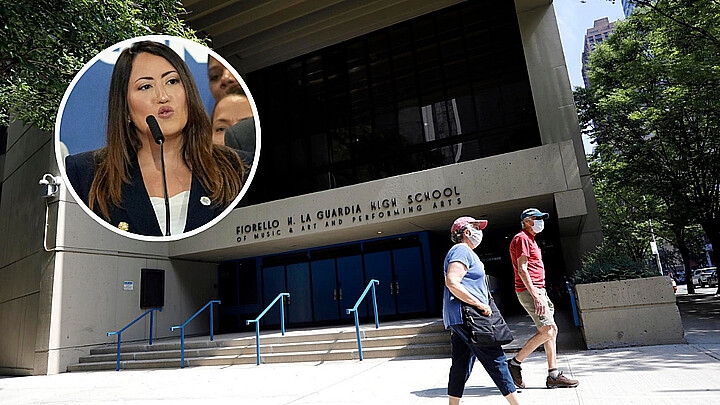Education
NY Gov. Hochul signs bill capping NYC public school class sizes despite opposition from mayor
Critics say the bill does not address unequal outcomes in the system, especially for black and Hispanic students.
September 9, 2022 1:55pm
Updated: September 9, 2022 4:50pm
New York Gov. Kathy Hochul (D) signed a controversial law on Thursday that caps class sizes in New York City public schools after reaching a deal with Mayor Eric Adams (D) and critical state lawmakers.
The legislation – which limits kindergarten to third grade classes at 20 students, fourth through eighth grade at 23 students and high school at 25 students – passed almost unanimously despite strong opposition from the city’s mayor in June, reports the New York Post.
The governor conceded an additional year for the requirements to phase in, which extended the final deadline from September 2027 to 2028. Implementation will begin next fall.
“While the current bill would require the five year phase-in to be complete by September 2027, implementation of this initiative will require significant strategic planning. I have secured agreement with the Legislature to require a full phase-in of the plan by September 2028,” Hochul said in a signing statement released by her office.
Adams and his schools chancellor, David Banks, has opposed the measure since it was considered in spring citing “unwelcome trade-offs” and severe cuts through the city school system.
“An unfunded mandate like this would potentially do huge damage to our system,” Banks warned at the time, citing a $500 million annual price tag for just elementary schools.
The mayor was also upset at how the state legislation reduced his control over the city’s public schools system for just two years despite promises of three or four from the governor’s office.
Mona Davids, a high-school parent and president of the NYC Parents Union, said the bill did not address unequal outcomes in the district.
“Fifty-eight percent of New York City classrooms already meet the class-size goals — and those smaller class sizes are most often in failing schools with staggering, and increasing, enrollment losses,” she wrote in a July op-ed.
“And for families like mine, the failures of the system are more pronounced – 65% of black and Hispanic students do not read, write and do math at grade level,” added David, who was born in South Africa.
“New York City has been graduating students who are illiterate and innumerate. Parents are fleeing failing public schools and enrolling their children in charter, parochial, private and home-school alternatives.”
Advocates of smaller class sizes cite research showing that the number of students in a class impacts the quality of education they receive.
But other research shows that, in practice, any gains are canceled out of inexperienced teachers are brought on to staff the smaller classrooms, according to the education nonprofit Chalkbeat.








